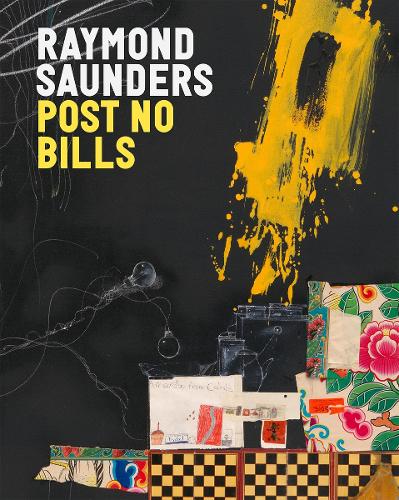
Raymond Saunders: Post No Bills
(Hardback)
Publishing Details
Raymond Saunders: Post No Bills
By (Author) Raymond Saunders
David Zwirner
David Zwirner
4th November 2025
United States
Classifications
General
Non Fiction
Paintings and painting
759.13
Physical Properties
Hardback
208
Width 241mm, Height 305mm
Description
Discover Raymond Saunders's dynamic paintings and his extraordinary legacy as an artist and thinker in his first monograph.
Saunders's work brings together his extensive formal training with his own observations and lived experience. His assemblage-style paintings frequently begin with a monochromatic black ground elaborated with white chalk-a pointed reversal of the traditional figure-ground relationship. He subsequently adds other markings and materials, such as wallpaper, advertisements, rulers, and paintbrushes. Expressionistic swaths of paint and line drawings tangle with found objects, signs, and doors collected from his physical surroundings at home and abroad, creating unexpected visual rhymes and resonances. At once deliberately constructed and improvisatory, didactic and deeply felt, these richly built surfaces conjure a range of themes, allowing for a nuanced multiplicity of meanings.
Documenting a two-part exhibition at David Zwirner and Andrew Kreps Gallery in 2024, this publication features a conversation between curator Ebony Haynes and the Studio Museum of Harlem director Thelma Golden about Golden's multidecade engagement with Saunders's artwork and writing. A facsimile of Saunders's self-published pamphlet from 1967, Black Is a Color-his vital essay on the creative expression of the artist-is reproduced alongside new commentary by the art historian Darby English. An essay by Jarrett Earnest offers an in-depth interpretation of two of Saunders's complex chalkboard works. Also included are a previously unpublished interview from 1980 between the artist and Judith Wilson and a pivotal text from 1993 by the art historian Richard J. Powell that offers a panoramic examination of Saunders's art from 1968 to 1993, with a special focus on his iconic painting Dr. Jesus.
Reviews
"Behind the unity provided by color, these works showcase a great diversity of approaches...This perfectly encapsulates how Raymond Saunders engages with the world and history, transforming a proscription into a foundation for imagination"-- "The Art Newspaper"
Author Bio
Born in 1934 in Pittsburgh, Raymond Saunders first studied art in the city's public schools, participating in a program for artistically gifted students. His mentor, Joseph C. Fitzpatrick, the director of art for Pittsburgh's public schools, taught other artists including Andy Warhol, Philip Pearlstein, and Mel Bochner. Through Fitzpatrick's support and encouragement, Saunders earned a scholarship to the Pennsylvania Academy of Fine Arts in Philadelphia and received his BFA from the Carnegie Institute of Technology in 1960. He subsequently earned an MFA from the California College of Arts and Crafts in Oakland in 1961. In 1968, he accepted a teaching position at California State University, Hayward, eventually joining the faculty of his alma mater (now California College of the Arts), where he remains professor emeritus.
Introduction by Ebony L. Haynes. Texts by Jarrett Earnest, Darby English, Richard J. Powell, and Raymond Saunders. Interview with Raymond Saunders by Judith Wilson. Conversation between Thelma Golden and Ebony L. Haynes.
